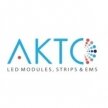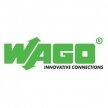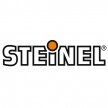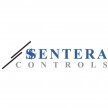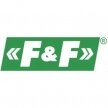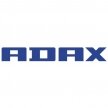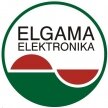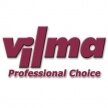-
Product Catalog
- Security and Surveillance Systems
- Automatic Circuit Breakers for Direct Current (DC) Circuits with Integrated Overload, Short-Circuit, and Voltage Stabilization Protection Functions
- Lighting with the help of electrical energy
-
Automation and Control Systems
- Automation control accessories
- Control components for automation and control systems
- Passive lifting | unloading | transporting magnets
- Signal converters | controllers for automation control | for control systems
- Touchscreens | panels for automation control | control systems
-
Power Contactors | Control Circuit Intermediate Relays
- Mini contactors for electric motor control
- Contactors | Electrical starters | For equipment control
- Electromechanical thermal relays | electrical equipment protection
- Contactors with enclosure and control buttons | for electrical equipment control
- Control coils for contactors | starters | electrical equipment control
- Adapters-converters for relays and contactors
- Additional contacts | Accessories for contactors
- Relays for electrical equipment automation control | monitoring
- Relay sockets | for connecting relays to the control system
- Relay modules | for the safe operation of electrical equipment
- Optical sensors | detectors for automation devices
- Automation control | Data transmission | Low current
- Sealing profiles | rubber | gaskets | strips
- Inflatable Liquid Storage Tanks | Reservoirs | Bladders
- Inflatable rubber plugs for sealing high-pressure plumbing pipes
- Electrical distribution and installation
- Solar Energy Generation and Management Equipment
- HVAC control solutions for heating and ventilation.
- Special products and accessories
- Other products
- Safety tools
- Quality used products
Contactors with enclosure and control buttons | for electrical equipment control
-
Contactors with a box, control buttons, and reverse control are electromechanical devices that allow controlling electric motors and other equipment not only by turning them on and off but also by changing the motor's direction of rotation. These contactors are commonly used in industrial systems where it is necessary to change the motor's movement direction – for example, in conveyors, elevators, pump systems, or automatic doors.
-
Read more
Contactors with a box, control buttons, and reverse control are electromechanical devices that allow controlling electric motors and other equipment not only by turning them on and off but also by changing the motor's direction of rotation. These contactors are commonly used in industrial systems where it is necessary to change the motor's movement direction – for example, in conveyors, elevators, pump systems, or automatic doors.
The contactors are mounted in a protective box, which not only shields from environmental factors but also includes integrated control buttons: "Start," "Stop," and often additional buttons "Forward" and "Reverse" that allow changing the motor's rotation direction.
Practical applications:
Industrial conveyors with reverse movement:
Reverse control contactors are widely used in industrial conveyors where the direction of belt movement needs to be changed. For example, in food processing plants or warehouses, materials may be transported in different directions depending on process requirements. Contactors with reverse control allow workers to easily change the direction of the conveyor belt by pressing the "Forward" or "Reverse" button.Elevators and lifting equipment:
In elevator and lifting equipment systems, reverse control is essential. For example, an elevator needs to move up and down, and contactors with reverse control enable safe and efficient change of the motor's rotation direction, depending on the required movement. "Up" and "Down" buttons ensure the elevator moves in the correct direction as per user requirements.Automatic doors and gates:
Reverse control contactors are commonly used in automatic door or gate systems, where doors need to open and close by changing the motor's rotation direction. For example, in warehouses or garages, where doors or gates must open and close at the press of a button, contactors with reverse control allow this to be done efficiently and safely.Drilling and turning machines:
Reverse control contactors are also widely used in drilling and turning machines, where the operator must be able to change the machine's operation direction for precise work. For instance, in turning machines, the working tool must rotate both forward and backward, and reverse control contactors give the operator the ability to do this quickly and efficiently.Pumps with reverse flow:
Reverse control contactors can be used in pump systems where the flow direction needs to be changed. For example, in drainage or recycling systems, where water or other materials may need to be pumped in different directions depending on the process. By using contactors with reverse control, the operator can easily change the pump's operation direction to allow the flow to move backward or forward.Advantages:
Reverse control: One of the main benefits is the ability to change the motor's rotation direction, which allows control of more complex systems, such as conveyors, elevators, and automated equipment. In lifting systems, for example, reverse control enables quick and safe changes in the lifting direction.
Protective box: The contactors are installed in protective boxes that safeguard the control components from dust, moisture, and mechanical damage. This is especially important in industrial environments, where reliable protection from harsh working conditions is required.
Integrated control buttons: Contactors with buttons allow operators to control equipment directly without additional remote control devices. This provides simple, direct control and ensures that the system operates safely and efficiently. Typically, control panels include "Start," "Stop," "Forward," and "Reverse" buttons that provide full control over the motor.
Safety: Using reverse control contactors ensures that the motor operates safely. This means protection from incorrect motor operation direction, overloads, and other issues, as the devices have built-in safety features.
Easy installation and maintenance: Contactors with boxes are easy to install and maintain. The control buttons allow quick diagnostics and ensure that operators can respond quickly to malfunctions.
Disadvantages:
Higher costs: Contactors with a box and reverse control typically cost more than standard contactors. This is due to the additional features, such as reverse control and extra protective measures.
More complex installation: Although installation is straightforward, wiring may be more complex than for standard contactors, as reverse control circuits must be connected correctly. This may require additional expertise and time.
Larger size: Contactors with a box and reverse control are usually larger and take up more space than simple contactors, so more space may be required for installation in electrical cabinets or control panels.
Examples:
Conveyor systems:
Reverse control contactors are used in industrial conveyor systems, where it is necessary to change the transportation direction, such as in production lines or warehouses. The worker can easily change the direction of the belt depending on the need.Industrial elevators:
In lifting equipment, such as industrial elevators or hoisting mechanisms, reverse control allows safe and reliable changes in lifting and lowering direction. A contactor with reverse control ensures the equipment operates as needed.Automated door and gate systems:
In automated door systems, reverse control allows gates or doors to open and close using one system. This is especially useful in large buildings or warehouses where fast control of entry and exit points is needed.Summary:
Contactors with a box, control buttons, and reverse control provide industrial and commercial systems with the ability to efficiently control electric motors not only by turning them on and off but also by changing the rotation direction. They are widely used in industrial conveyors, elevators, automated door systems, and pump systems. Although their installation and maintenance may be more complex, they offer great versatility, reliability, and safety, ensuring efficient control of electrical systems.No items found.
US IN SOCIAL NETWORKS

